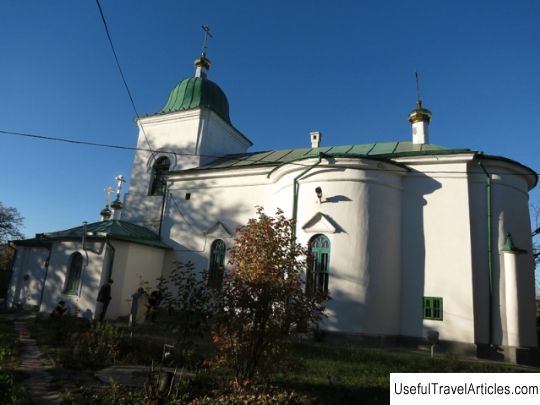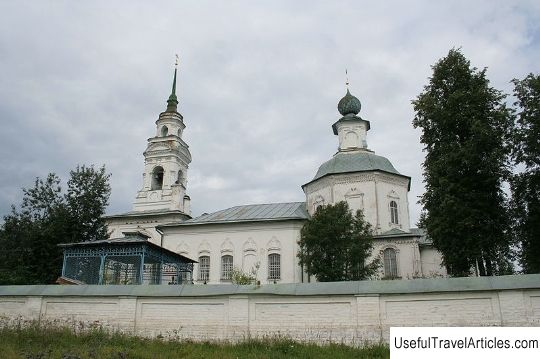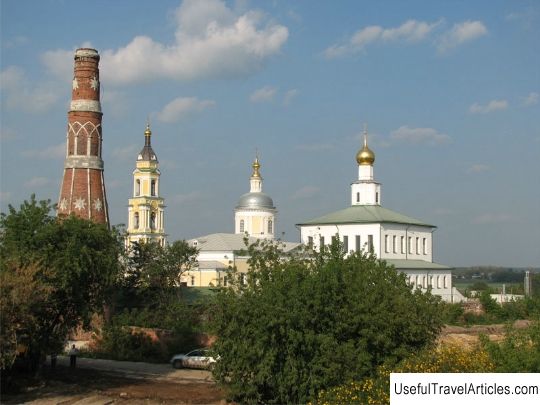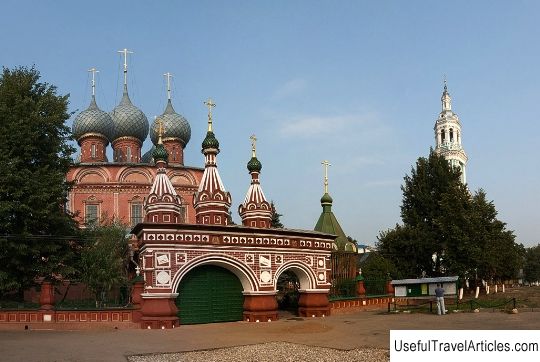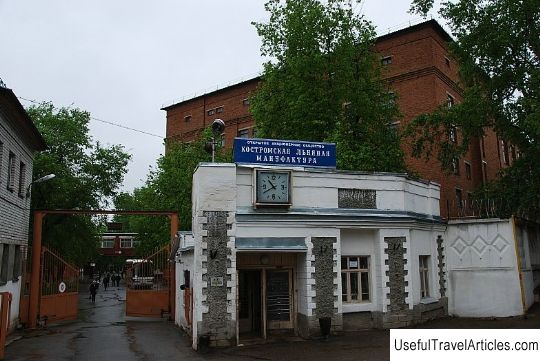Epiphany-Anastasiin Monastery description and photos - Russia - Golden Ring: Kostroma
Rating: 8,3/10 (386 votes) 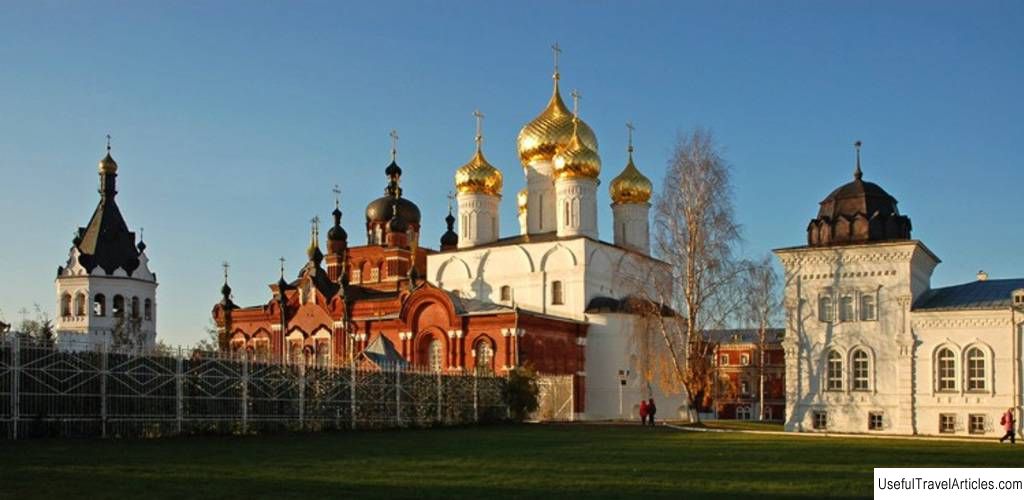
Epiphany-Anastasiin Monastery description and photos - Russia - Golden Ring: Kostroma. Detailed information about the attraction. Description, photos and a map showing the nearest significant objects. Photo and descriptionThe magnificent and unusual Epiphany Cathedral of Anastasia Monastery combines two buildings - one built in the 16th century, the second in the 19th. Now it is the Cathedral of Kostroma, it houses the main Kostroma shrine - the Feodorovskaya icon of the Virgin. In addition, the old monastery buildings and one more - the Smolensk - church, rebuilt from the tower, have been preserved here. History of the monasteryThis is one of the monasteries that were founded throughout Russia by numerous disciples of Sergius of Radonezh ... This one was founded by the Monk Nikita of Kostroma . Nikita was from a noble family, and a relative of Sergius himself. For a long time he was abbot of the Vysotsky monastery in Serpukhov, then he lived in the Vysoko-Petrovsky monastery in Borovsk (where he instructed the young Pafnutiy Borovsky), and then he retired near Kostroma to found his own monastery with the blessing of St. Sergius. The date of foundation of the monastery is 1426. At first it was wooden, and in 1559 the wooden Epiphany Cathedral was changed to a stone one. It is believed that this was the very first stone church of Kostroma. The monastery was under the patronage of the appanage princes Staritsky and this period of its history is associated with them. The stone cathedral was built with the money of the last Russian appanage prince - Vladimir Staritsky. He was a cousin of Ivan the Terrible, served him, took part in military campaigns. But in the end, he still fell into disgrace, and then was executed along with the whole family - Grozny could not stand the shadow of another contender for the throne. It is believed that the reason for the slip was just the solemn meeting of Prince Vladimir at the Epiphany Monastery. The monastery itself was then devastated by Ivan the Terrible and most of the brethren, led by the abbot, were executed. During the time of troubles, the wooden monastery was taken in 1608, and during the assault several monks and surrounding peasants were killed - their the names are remembered here and still serve as memorial services for them. After the monastery was rebuilt at the beginning of the 17th century. In 1618, the Church of the Three Saints appears, in 1610 - the Church of St. John the Theologian, a new refectory, and a little later the monastery is surrounded by stone walls with six towers. Two more convents are attributed to the monastery, located nearby - Krestovozdvizhenskaya and Anastasiina. The Epiphany Cathedral is being rebuilt, the famous artel of Guria Nikitin painted it at the end of the 17th century. The boyars Saltykovs donate a lot to the monastery - it is their ancestral burial vault. In 1760, St. Nicholas Church appears - Major General Mikhail Petrovich Saltykov, who began his service under Menshikov and finished under Catherine II, is buried in it. The male monastery here withers, and in the meantime two neighboring female ones - Anastasiin and Krestovozdvizhensky merge into one. In 1821-1824, the famous Makariy Glukharev was the rector of the Kostroma seminary and the archimandrite of this monastery. This was the beginning of his journey. Then he will move to Kiev, and then he will organize the Altai spiritual mission and go to preach in Siberia. He was one of the most educated people of his time, the first translators of Scripture into modern Russian, he communicated with the Decembrists in Siberia and nursed them. Macarius was canonized in 2000. In the monastery, the Smolensk Church built on his initiative reminds of him. In 1847, a terrible fire breaks out, and the monastery is actually destroyed. The brethren leave here, and for several years everything has been in ruins, until in 1863 the Anastasia women's monastery was transferred here. And then, on the initiative of the new abbess, it is actually rebuilt. After the revolution, the monastery was abolished, but the cathedral functioned until 1924. Then the Kostroma archive was placed in it, then it was supposed to make a concert hall. Since 1990, the monastery has been reviving. From the entire large complex of monastic buildings, little has survived to our time. Three towers and part of the wall have survived in a significantly rebuilt form. In place of the old walls, there is now a post-war Stalinist building. The St. Nicholas Church of the 18th century with a bell tower was lost - now there is a memorial cross on this place. Epiphany Cathedral The temple was built on the site of the previous wooden one in 1559. In the 17th century, a belfry appeared, and the pozakomarny covering was replaced by a hipped roof. In those days, the cathedral was surrounded by a gallery, but until now it has not reached. In the middle of the 19th century, the monastery burns and for several years lies in fact in ruins, and after 1863 it was rebuilt. In 1867, a new part was added to the cathedral: another five-domed brick church in the pseudo-Russian style. Now this building looks unusual - like two churches standing side by side. In fact, they are connected inside - the old part became the altar, and the new one became the church itself. In the new part, the limit of St. Anastasia - after all, Anastasia's monastery moved here, and the borders of St. Nikita and Sergei Radonezhsky - here are the remains of the monastery graves. It is believed that the icon of St. Sergius of Radonezh, located in this temple sometimes streams myrrh. The paintings of Gury Nikitin, unfortunately, have not reached our times: the Kostroma archive, which was located in the temple, burned down in the 80s of the XX century, and the frescoes were destroyed ... The temple was painted again in our time. Here is the tombstone of the founder of the monastery - St. Nikita Kostromsky. Also now there are the relics of another Kostroma saint - Timothy Nadeevsky. This was the elder, the spiritual son of St. Seraphim of Sarov, who lived in the Nikolo-Nadeevskaya desert in the first third of the 19th century. His burial and relics were found in 2003 during the restoration of the monastery, he was canonized, and the body was transferred to the cathedral. Among the shrines of the cathedral there is also a reliquary with particles of the relics of 278 saints. It was kept earlier in the Igretsky Monastery - one of the largest and richest monasteries in Kostroma, and after the closure of the monastery was transferred here. Feodorovskaya icon Now the Epiphany Cathedral houses one of the most revered icons of the Mother of God in Russia - Theodorovskaya. Tradition says about it that it was written by the Apostle Luke, in reality it dates back to about the 12th century and repeats the iconography of Vladimir. It is not known why it is called "Theodorovskaya" - most likely, this is due to the fact that the icon is associated with the Mstislavich family, the descendants of Vladimir Monomakh, and they venerated Theodor Stratilat as their patron. Now Fyodor Stratilat is considered the patron saint of Kostroma, and a monument to him appeared in front of the cathedral in 2002. Most likely, this icon was kept for a long time in some of the temples dedicated to St. Fyodor Stratilat. A special veneration of the icon began in the 17th century. According to legend, it was on the day of the celebration of this icon that Mikhail Romanov agreed to accept the Russian throne, and it was with this icon that the nun Martha blessed her son. Subsequently, it was in honor of this particular icon that German princesses who marry representatives of the Romanov family, adopting Orthodoxy, received the patronymic Fyodorovna. Maria Feodorovna, wife of Paul I, and Maria Feodorovna, wife of Alexander II, Alexandra Feodorovna, wife of Nicholas I, and Alexandra Feodorovna, wife of Nicholas II - all of them were named after this icon. The icon was in Assumption Cathedral in Kostroma. After the war, they tried to restore it - unfortunately, the restoration showed that only scattered fragments remained from the original painting of the 12th century, but the icon of St. Paraskeva has survived - the dating of the icon is given now primarily by it. After the destruction of the Assumption Cathedral, the Feodorovskaya icon of the century changed its place of residence several times, because the seat of the bishop's chair was moved several times in Soviet times. Since 1991, the Cathedral of the Epiphany of Anastasia monastery is the Cathedral of Kostroma, and the shrine is located there. p> Smolensk Church The church was built in 1824 on the site of one of the corner towers of the monastery walls. The Smolensk Icon of the Mother of God was once painted on the wall of this tower - by the same icon painters who painted the Epiphany Cathedral in 1672: Guriy Nikitin and Sila Savin. The icon soon began to be revered among the people as miraculous. In the middle of the 17th century, there was a big fire, all the buildings of the monastery burned, but miraculously, this fresco was not damaged. At the beginning of the 19th century, the dilapidated tower was rebuilt into a church. The architect, most likely, was P. Fursov. In the middle of the 19th century, the miracle was repeated - during the great fire of 1847, the icon survived. The church received its modern look after the reconstruction in 1887. By this time, the monastery housed a spiritual seminary, and the Smolensk church became a seminary. After the revolution, the building was for some time a museum of revolutionary printing. The setting of the miraculous icon was removed, but it itself was badly damaged, and restored after the transfer of the church building. Note
      We also recommend reading Old Town Hall (Altes Rathaus) description and photos - Austria: Bregenz Topic: Epiphany-Anastasiin Monastery description and photos - Russia - Golden Ring: Kostroma. |
